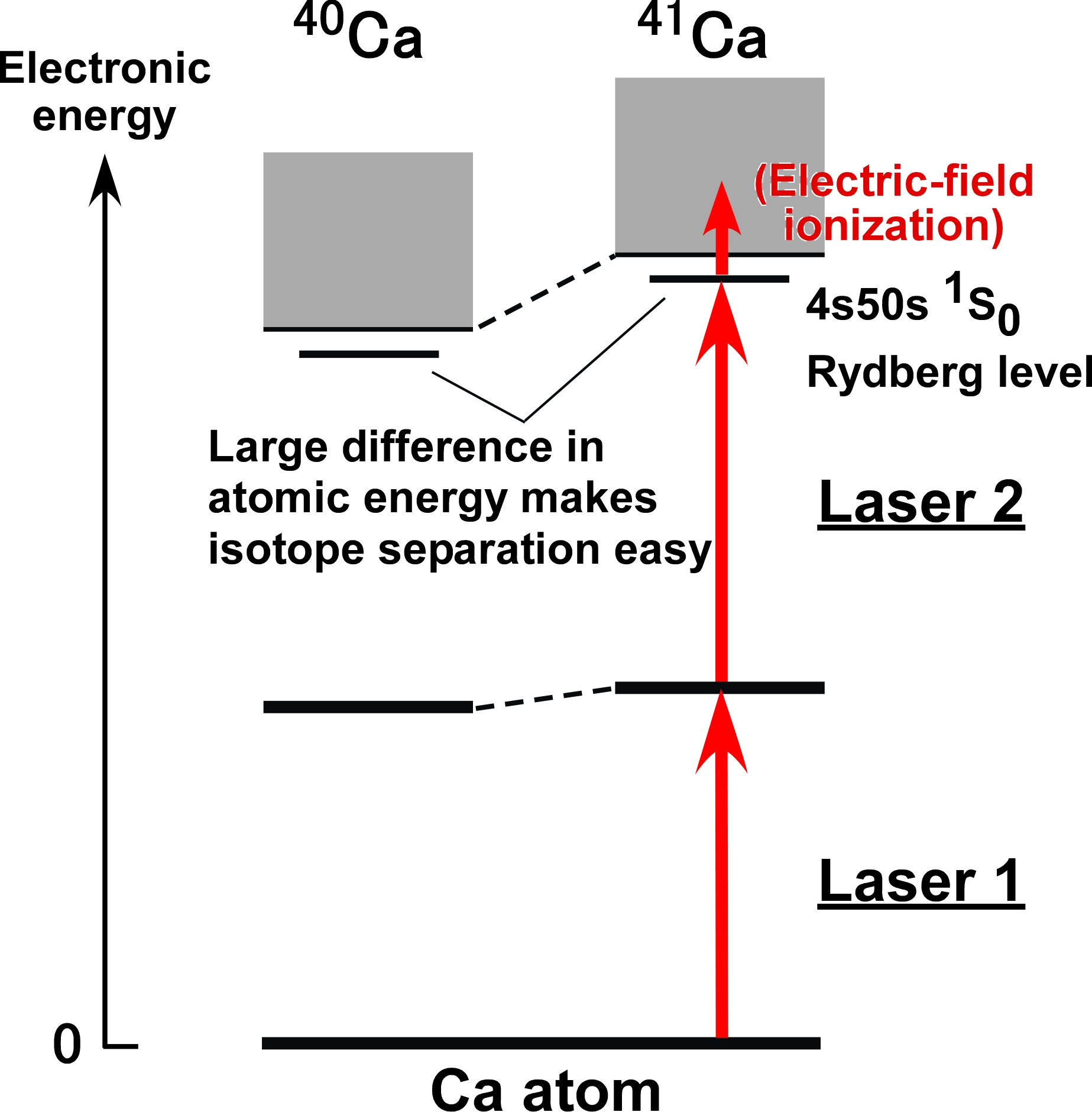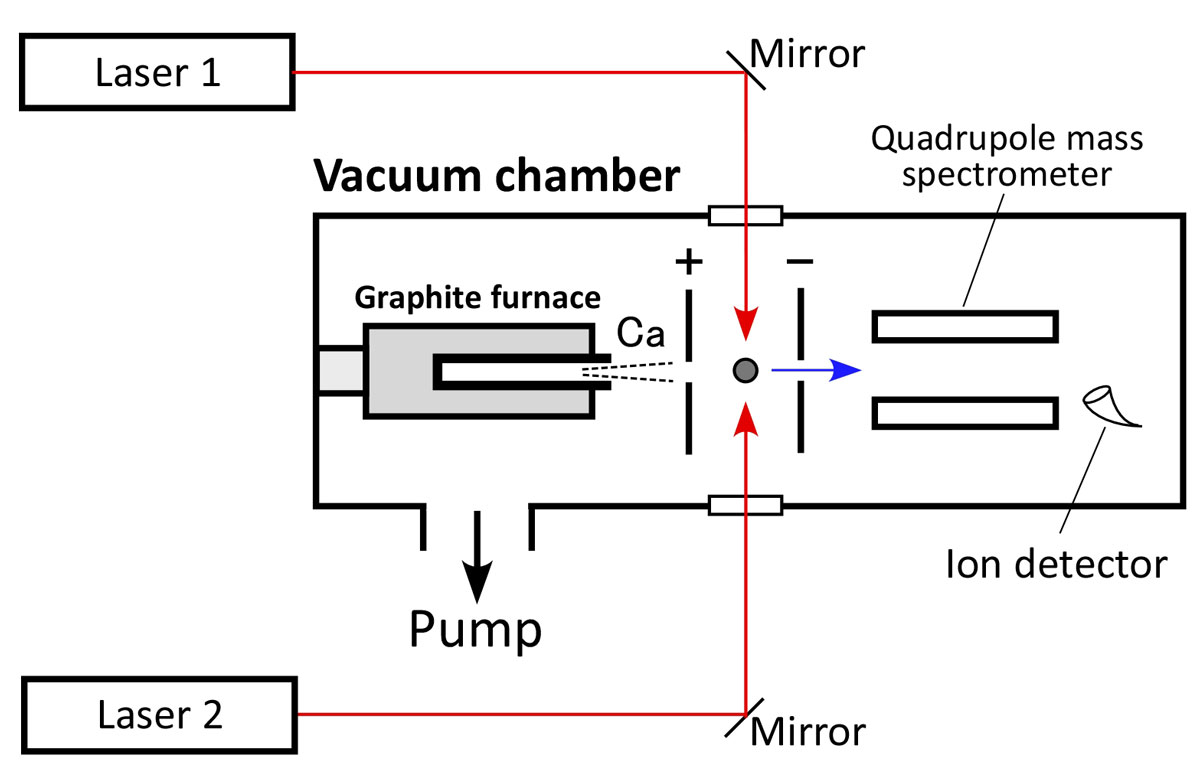Publication Date: Februay 7, 2025
Access counts:0
Toward a Simple Analysis of the Difficult-To-Measure Nuclide Calcium-41 Contained in Concrete Waste
-Selective Ionization of Odd Calcium Isotopes Using Electronic-Level Specificity-

Fig. 1 Selective ionization of 41Ca atoms by two-color, two-step excitation using lasers

Fig. 2 Experimental setup for laser resonance ionization using a stable Ca isotope sample

Fig. 3 Ca+ ion spectrum measured by scanning the frequency of laser 2
(The expected 41Ca peak position is indicated by a downward arrow)
In the dismantling of nuclear power plants, a simple and highly sensitive analysis of radionuclide calcium-41 (41Ca) to verify clearance levels is crucial for the rapid disposal of large amounts of concrete waste. 41Ca has a long half-life of ~100,000 years and the X-ray energy emitted during decay is low, making it a difficult-to-measure radionuclide in terms of radiation measurement. Inductively coupled plasma mass spectrometry, a widely used technique for mass analysis, does not have sufficient analytical sensitivity for samples with the 41Ca/40Ca ratio of ≤10−7, which corresponds to the clearance level of 41Ca. This is attributed to spectral interference from adjacent 40Ca and argon-40 (a carrier gas component).
In this study, laser resonance ionization is employed, which selectively ionizes 41Ca atoms using lasers 1 and 2 at resonant wavelengths specific to 41Ca (Fig. 1). This approach suppresses spectral interference from other isotopes and isobars. Utilizing Rydberg levels, the approach exploits the specific energy shift of odd isotopes to easily separate 41Ca from 40Ca. As shown in Fig. 2, a stable Ca isotope sample was heated in a graphite furnace to generate a Ca atomic beam. Fig. 3 shows the Ca+ ion spectrum measured by scanning the frequency of laser 2. This spectrum confirmed that the resonance frequency of the odd isotope 43Ca shifted to higher frequencies. A similar trend is expected for 41Ca.
By combining laser resonance ionization with conventional mass spectrometry, the study anticipates achieving an analytical sensitivity of ≤10−10 for the 41Ca/40Ca ratio, taking into account the isotope selectivity of lasers 1 and 2 and the mass resolution of the mass spectrometer.
This enhanced sensitivity can be useful for the rapid analysis of concrete waste.
This work was partially supported by JSPS KAKENHI Grant Number JP19H02646.
If you have any comments or feedback about this page, please click the button to share your thoughts with us.
